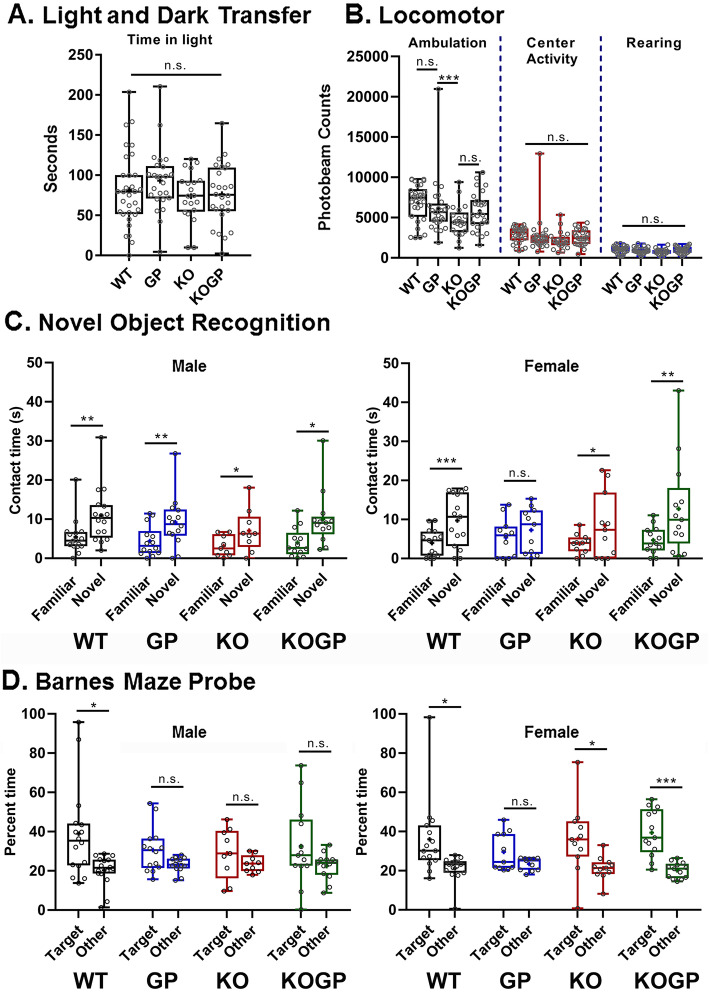Fig. 1.
IFNAR1 deficiency rescues recognition and spatial memory of HIVgp120tg females. Eleven to 14-month-old mice were behaviorally assessed (genotype: n for males/n for females—WT (WT): 11/11, HIVgp120tg (GP): 9/8, IFNAR1KO (KO): 9/11, and IFNAR1KO × gp120 (KOGP): 13/14). Light and dark transfer test for anxiety-like behavior (a); Locomotor (ambulation, center activity, and rearing (b); novel object recognition (c; left panel: males, right panel females); Barnes maze probe test for spatial learning and memory (d; left panel: males, right panel females). Data is presented in combined box-dot plots with the 25th and 75th percentiles. The middle line of the box shows the median, and the mean is indicated by a “+.” Statistical analysis was performed as described in the methods section. ***P < 0.001, **P < 0.01, *P ≤ 0.05; ANOVAs Tukey’s HSD (a, b) and Fisher’s PLSD post hoc tests (c, d); n = 17–27 (males and females) per group/genotype (total n = 86 animals); n.s., not significant.

